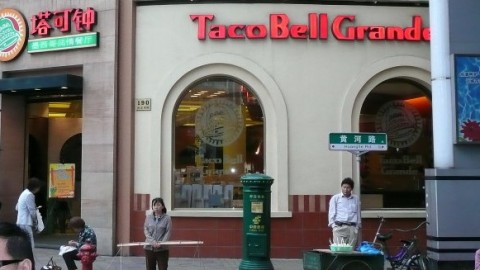Pizza Box Composting Gets College Try

Campus arms race to go green nets creative efforts to deal with the greasy containers
RALEIGH, N.C.—College students love pizza. They also love recycling.
But their pizza boxes are virtually unrecyclable, thanks to the cheesy, greasy residue left behind on the cardboard bottoms.
What’s a poor school to do?
At North Carolina State University, the answer is the Pizza Box Composting Project—dumpsters placed at eight locations around campus that since early last year have helped turn approximately 16,000 grease-stained boxes into fertilizer.
At Saturday’s packed Homecoming, sophomore volunteer Wesley Phan moved a composting bin in front of a trash can so that it would be noticed by those disposing of their individual pizza boxes during the game. “It’s a strategy,” he said. “You force them to think.”
Colleges nationwide are in an arms race to out-green each other, as they endeavor to appeal to Generation Z, or those defined as coming after the Millennial generation, by touting their improvements in saving water (low-flow dorm shower heads) and plastic (compostable forks and reusable to-go containers in dining halls).
 ENLARGE
ENLARGEMore than half of the members of Generation Z “take steps beyond recycling” to limit their impact on their environment, according to a 2014 survey of 1,015 young people by Northeastern University.
But pesky pizza boxes continue to pile up in dumpsters and dorm hallways—despite high profile campus recycling efforts—because cardboard is recycled in a water-based system, and water and oily pizza residue don’t mix.
The problem goes well beyond campus and extends to cities across the U.S. including San Jose, Calif., and Washington, D.C.
Industry giant Domino’s Pizza delivers about 200 million pizzas a year nationwide but says very few of those boxes are recycled because of municipal bans against recycling soiled cardboard. “It’s not something we can control on our end,” said Jenny Fouracre-Petko, Domino’s spokeswoman.
Some schools encourage students to take half steps and rip off the unsullied top of a used pizza box and recycle it. The greasy bottoms then go in the trash, adding to the nation’s waste and taking up space in U.S. landfills.
A campaign by the anti-littering Keep America Beautiful organization touts recycling half a box “as better than none.” But the non-profit group says while the U.S. recycles about 63.5% of paper, people still trash enough paper and cardboard each year to fill 26,700 football fields in material three feet deep.
Some other schools, like Smith College in Northampton, Mass., have experimented with plastic pizza delivery containers that are usable hundreds of times. Smith dropped the newfangled containers, which can be expensive and unwieldy. Miami University in Oxford, Ohio, ended its dorm-based pizza box composting program last year. “It did not work so well,” said spokeswoman Claire Wagner, as few students participated and custodians struggled to keep the bins neat.
N.C. State University, a 34,000-student school focused on agriculture and engineering, sees composting as a must for campuses that want to move the needle on the environment.
More than 200 of 700 institutions are composting in some fashion, according to a self-reporting survey by the decade-old Association for the Advancement of Sustainability in Higher Education. “A lot of campuses are recognizing that waste diversion goes beyond just recycling,” said Meghan Fay Zahniser, executive director of the association.
Ms. Zahniser said pizza-box composting is not yet widespread on campuses. “It’s incredible when you think about the thousands of pizzas on college campuses,” she said. “All those boxes are going to the landfill.”
Like many schools, N.C. State in Raleigh has been composting for several years, by having cafeteria staff scrape plates of leftover food into giant bins. Last year the school added pizza box composting by placing dumpsters with giant pizza emblems outside dorms.
Recycling manager Analis Fulghum said the key to N.C. State’s program is sending the boxes to a commercial composting facility large enough to absorb copious amounts of cardboard in its mix of discarded food, egg shells and coffee grounds. The school pays to dump the pizza boxes at the composting site, but says the program nearly breaks even because of a reduction of trips to the landfill.
At Saturday’s football game, the biggest challenge was keeping stray plastic out of the composting bins. One piece of plastic can get shredded into a composting mix and break into hundreds of tiny pieces.
“I hate to sound like ‘Oh my goodness, you have to focus when you’re composting,’ “ said Amy Brooks, whose family runs the composting operation used by N.C. State, “but contamination is a huge problem.”
The National Resources Defense Council’s Eric A. Goldstein said he does not see pizza box composting as convenient or viable on a large scale, since composting generally permits only a limited amount of paper or carbon. Better to recycle, he said, particularly in places like New York City which will accept clean boxes.
“Many people have pizza several times a week. Keep your cheese off your pizza boxes and recycle them,” he said, suggesting removal of the pizza from the box along with any underlying wax paper.
Jeff McIntire-Strasburg praised pizza box composting in a sustainablog.org post “How to Handle the Second-Largest Waste Stream on Campus,” (after aluminum cans). Mr. McIntire-Strasburg says he hopes more universities start programs, and more consumers do what he does: rip up pizza boxes and add the shreds as necessary carbon material in the backyard compost pile.
[author] [author_image timthumb=’on’]http://sandropiancone.com/images/SAN_D2-1.jpg[/author_image] [author_info]Sandro Piancone[/author_info] [/author]





